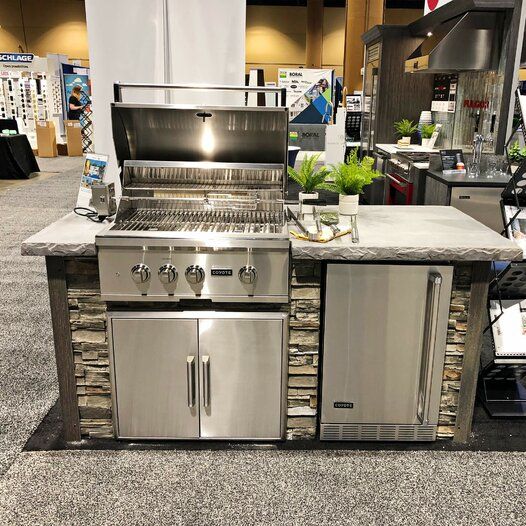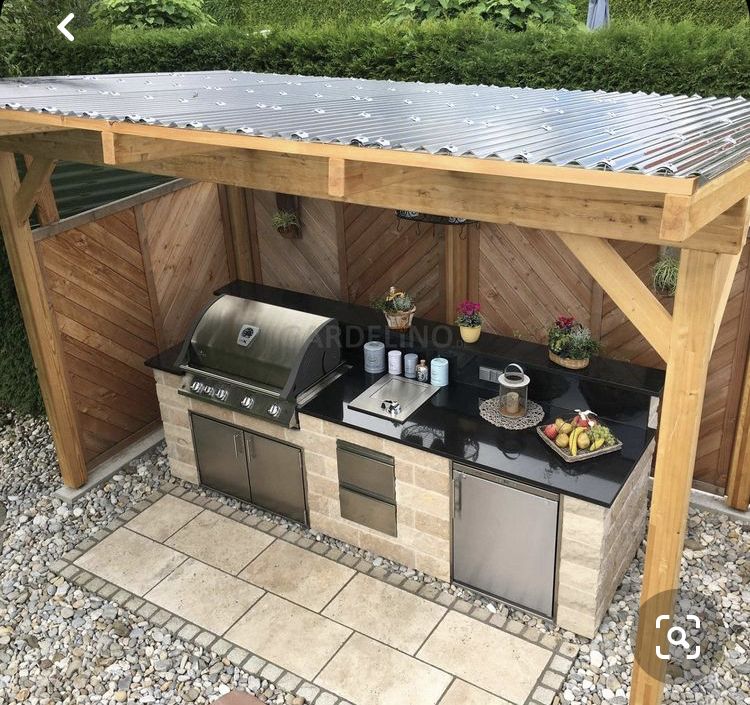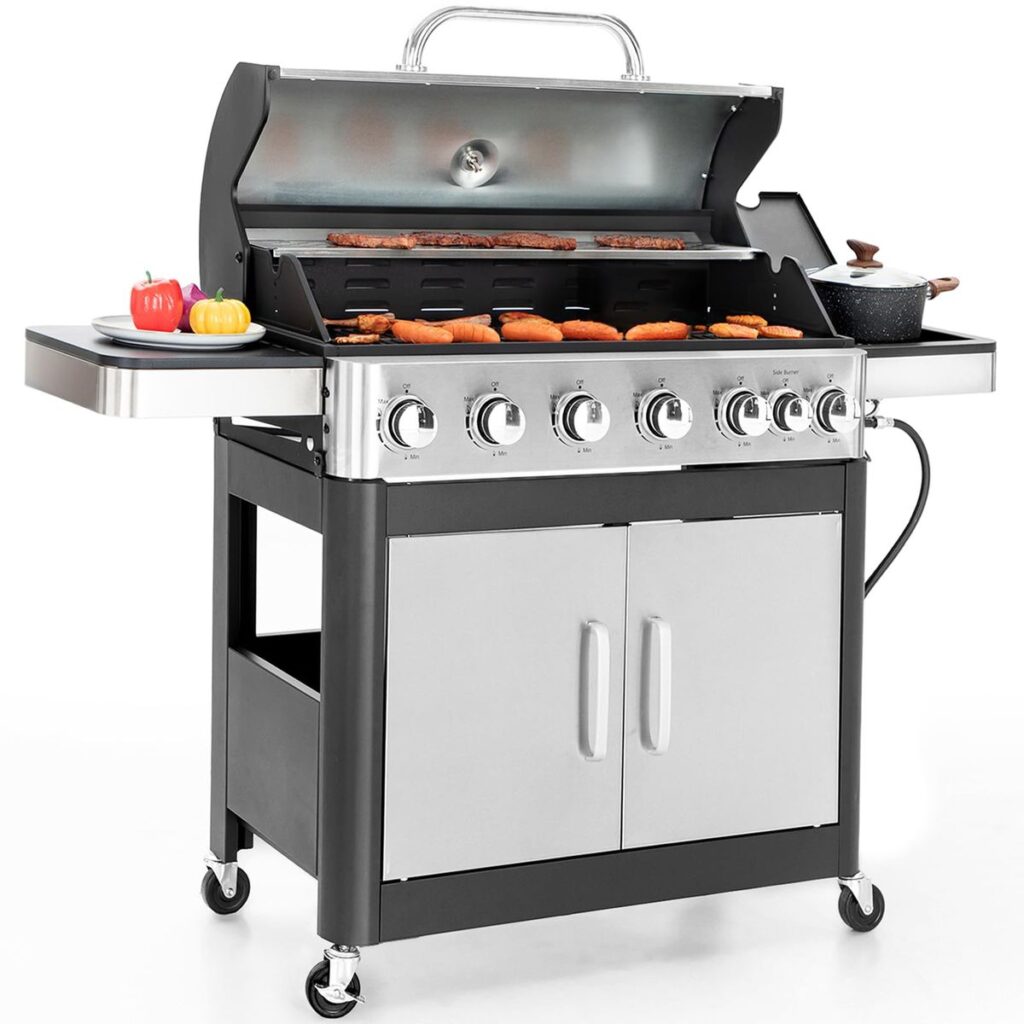When dinner needs to be tasty but simple, a gas grill can be your best friend. Fast heat and steady flames make outdoor cooking easier.
A gas grill works well for meat, seafood, and vegetables because it heats evenly and is easy to control. With the right tips, you can get juicy, flavorful results every time.
Many people think grilling is only about fire and meat, but a gas grill opens more choices. Let’s go through the top questions people ask and see how to make your food taste great.

What meats taste best on a gas grill?
Tender cuts like ribeye, chicken thighs, and lamb chops keep their flavor well. A gas grill’s steady heat helps avoid overcooking.
Ribeye, chicken thighs, and lamb chops are among the best meats for a gas grill because they retain moisture and develop great flavor with even heat.
When you grill meat on gas, the steady flame is your ally. For beef, ribeye and sirloin are forgiving because of their fat content. Chicken thighs hold moisture better than breasts, so they stay juicy. Lamb chops benefit from short, high-heat searing followed by a gentle finish.
Tips for cooking meat on a gas grill
- Preheat for 10–15 minutes
- Keep the lid closed to hold heat
- Use a thermometer for accuracy
A gas grill also lets you mix direct and indirect heat. This means you can sear meat on one side of the grate, then move it to the cooler side to finish cooking. This avoids burning the outside while the inside cooks through.
How do you keep food juicy on a gas grill?
Juiciness comes from timing and temperature. Overcooking drives moisture out, so aim for target temps.
To keep food juicy, avoid overcooking by monitoring temperature and resting the meat after grilling to let juices redistribute.
Resting is as important as cooking. For example, after grilling chicken, cover it loosely with foil for 5–10 minutes before slicing. This pause lets moisture settle back into the meat fibers.
Basting during cooking can also help. Lightly brush meat or vegetables with oil or a thin marinade to prevent drying. Just avoid too much sugar early on, as it can burn before the food is done.

What temperature is ideal for gas grill cooking?
Different foods need different heat zones. Steaks like high heat; vegetables prefer medium.
Use high heat (450–500°F) for searing meats, medium heat (350–400°F) for vegetables, and low heat (300–325°F) for slow cooking or delicate items.
Quick temperature guide
| Food Type | Heat Level | Approx Temp (°F) | Cooking Style |
|---|---|---|---|
| Steaks/Burgers | High | 450–500 | Direct, sear fast |
| Chicken/Seafood | Medium | 350–400 | Direct/Indirect |
| Vegetables | Medium | 350–400 | Direct, quick |
| Ribs/Brisket | Low | 300–325 | Indirect, slow |
Preheating is critical. Without it, food sticks to the grates and cooks unevenly. Also, using two heat zones gives you flexibility—one for searing and one for finishing.
What seafood grills best on a gas BBQ?
Salmon, shrimp, and scallops do very well because they cook fast.
Firm fish like salmon and meaty seafood like shrimp or scallops are perfect for a gas grill, cooking quickly without falling apart.
Brush seafood with oil to prevent sticking. Grill salmon skin-side down to protect the flesh. For shrimp, skewers help keep them from slipping through grates. Scallops need just 1–2 minutes per side for a golden crust.
How can you add smoky flavor to a gas grill?
You can use smoker boxes, foil packets, or flavored wood chips.
Place soaked wood chips in a smoker box or foil packet over a burner to add smoke flavor to food on a gas grill.
Popular wood choices include hickory for beef, applewood for pork, and cedar for fish. Keep the lid closed to trap the smoke. You can also use smoked spices like paprika or chipotle in your marinades for extra depth.
What vegetables work well on a gas grill?
Bell peppers, zucchini, asparagus, and corn are top picks.
Firm vegetables like bell peppers, zucchini, asparagus, and corn hold shape and flavor well when grilled over medium heat.
Cut vegetables into even sizes for uniform cooking. Use a grill basket for small items like mushrooms or cherry tomatoes. Lightly coat with oil and season before grilling.
How do you prevent flare-ups on a gas BBQ?
Flare-ups happen when fat drips onto burners.
Trim excess fat, keep a clean grill, and move food to indirect heat when flare-ups occur to control flames on a gas BBQ.
Avoid spraying water, as it can damage the grill. Instead, lower the heat and close the lid to smother flames. Keeping drip trays clean also reduces grease buildup that fuels flare-ups.

What marinades work best for gas grill recipes?
Oil-based marinades with herbs and acids tenderize and flavor food well.
A simple mix of oil, lemon juice, garlic, and herbs works for most meats and vegetables on a gas grill.
Avoid high-sugar marinades until the last minutes of cooking to prevent burning. Marinate meat for at least 30 minutes, but fish and seafood need only 15–20 minutes.
How do you clean a gas grill after cooking?
Clean while the grill is still warm.
Scrub grates with a grill brush while warm, empty drip trays, and wipe surfaces to keep your gas grill ready for the next cook.
Once cooled, check burners for clogs and inspect hoses for leaks. A clean grill not only lasts longer but also keeps flavors pure.
Conclusion
Gas grills make outdoor cooking fast, tasty, and simple when you know the right tips.
FAQs
What is the best oil to use on a gas grill?
Use oils with high smoke points, like canola or grapeseed, to prevent sticking without burning.
Can I use wood chips on a gas grill without a smoker box?
Yes, wrap soaked chips in foil with holes poked in the top and place over a burner.
Is indirect grilling possible on a gas grill?
Yes, turn off one side of burners and cook food on the unlit side for gentle heat.
How often should I deep clean my gas grill?
At least twice a season, or more often if used frequently, to keep it safe and efficient.
Do I need to cover my gas grill when not in use?
Yes, a cover protects it from weather damage and extends its lifespan.
Can I grill frozen meat on a gas grill?
It’s possible, but results are better if you thaw meat first for even cooking.
What’s the safest way to light a gas grill?
Open the lid, turn on the gas, then ignite to prevent gas buildup and flare-ups.
